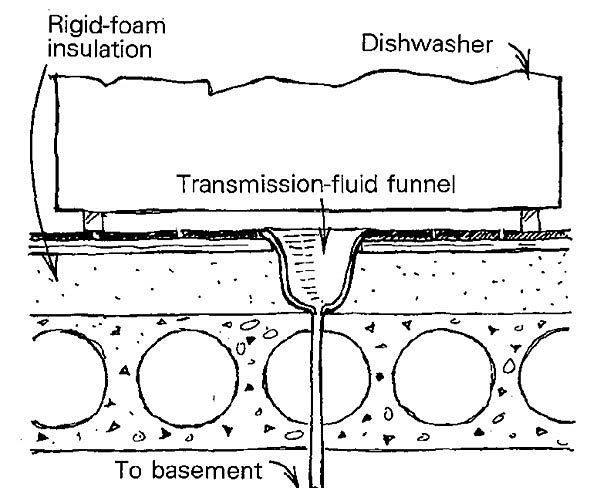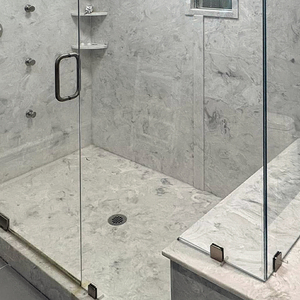
Most of the houses I build have precast-concrete plank floors covered with rigid insulation topped with plywood. The plywood serves as a subfloor for carpet, hardwood or tile. As you can imagine, water leaking onto such a floor could cause some real damage: if it made its way under the foam, it would take forever to evaporate.
Dishwashers are notorious for leaking around their seals, or if the door doesn’t shut tightly. So under the dishwasher in a house I worked in, I inset a plastic funnel, as shown in the first drawing. The funnel is the type sold at auto-supply stores for transmission fluid. I used a hole saw and a rasp to excavate a cavity in the foam for the funnel and sealed around its lip with silicone caulk. Then I drilled through the concrete plank floor for a drain tube that daylights near a floor drain in the basement. I chose not to run a sealed line so that any leakage could be easily spotted.
Plastic pans that are designed to go under hot water heaters can be used, but they are shallow and I have my doubts about their usefulness if a tank should fail. I installed the drain I made under the water heater by stopping the foam insulation shy of the waterheater tank (second drawing). I lined the resulting well with tile and placed a 2-in. drain line in its center. To prevent air infiltration, I put a trap on the line below the concrete plank. This drain also daylights in the basement where any runoff can be spotted immediately.
Joseph Fetchko, Ocean City, MD




























